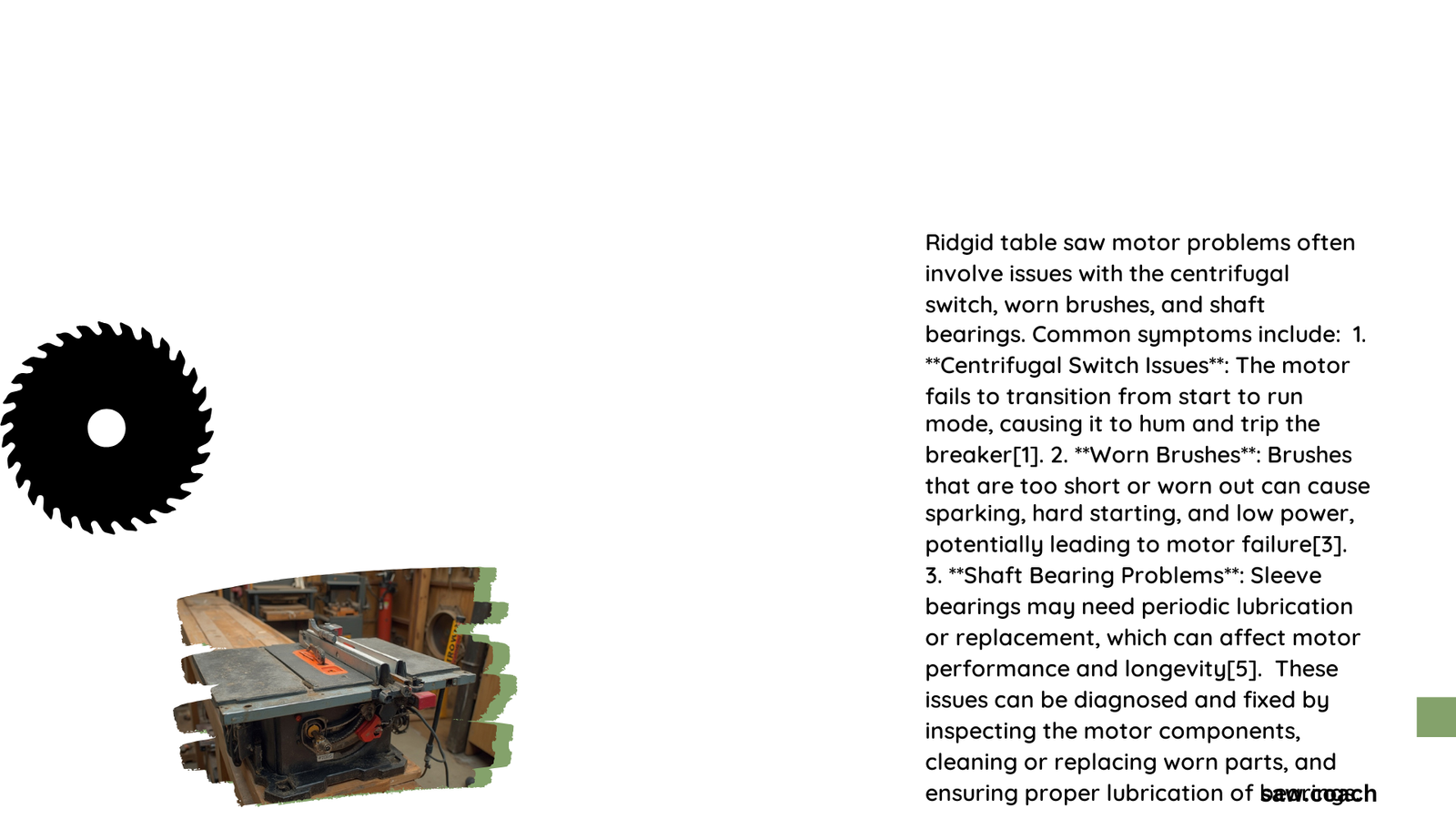Ridgid table saw motors can experience various performance issues that compromise woodworking efficiency. Owners frequently encounter challenges like motor overheating, power loss, centrifugal switch malfunctions, and brush deterioration. These problems can manifest through symptoms such as excessive vibration, unexpected circuit breaker tripping, reduced cutting power, and intermittent motor operation. Understanding these motor problems is crucial for maintaining tool performance and preventing costly replacements.
What Causes Motor Performance Failures?
Symptoms of Motor Deterioration
| Symptom | Potential Cause | Severity |
|---|---|---|
| Excessive Vibration | Worn Bearings | High |
| Power Loss | Brush Wear | Medium |
| Circuit Breaker Tripping | Electrical Shorts | Critical |
| Continuous Humming | Centrifugal Switch Failure | High |
Root Causes of Motor Malfunction
Ridgid table saw motor problems typically stem from several key factors:
- Electrical Component Degradation
- Worn carbon brushes
- Damaged centrifugal switch
-
Compromised wiring connections
-
Mechanical Stress
- Prolonged continuous usage
- Inadequate cooling
- Dust accumulation
- Improper maintenance
Diagnostic Strategies
How to Identify Motor Issues?
Diagnosing Ridgid table saw motor problems requires systematic evaluation:
- Visual Inspection
- Check brush condition
- Examine wiring integrity
-
Inspect motor housing for damage
-
Performance Testing
- Measure voltage input
- Test motor under load
- Monitor temperature during operation
Repair and Replacement Considerations
When Should You Replace the Motor?
Critical indicators suggesting motor replacement:
- Persistent overheating beyond 15-20 minutes
- Irreparable brush or switch damage
- Coil shorting with smoke emission
- Consistent power output reduction
Cost-Effective Maintenance Tips
- Regular cleaning of motor compartment
- Annual brush replacement
- Proper lubrication of moving parts
- Maintain consistent voltage supply
- Use dust collection systems
Technical Specifications
Typical Ridgid Table Saw Motor Characteristics:
– Voltage: 120V
– Horsepower: 3-4 HP
– RPM: Approximately 3450
– Brush Replacement Interval: Every 100-150 hours of use
Expert Recommendations

Professional woodworkers suggest:
– Always disconnect power before inspection
– Use manufacturer-recommended replacement parts
– Consider professional diagnosis for complex issues
– Maintain a clean, dry working environment
Prevention Strategies
Implementing proactive maintenance can significantly extend motor lifespan:
– Clean motor compartment monthly
– Check electrical connections quarterly
– Replace brushes preemptively
– Use surge protectors
– Avoid overloading the saw
Conclusion
Understanding and addressing Ridgid table saw motor problems requires technical knowledge, systematic diagnostics, and timely intervention. By recognizing early warning signs and implementing preventive maintenance, woodworkers can ensure optimal tool performance and longevity.
